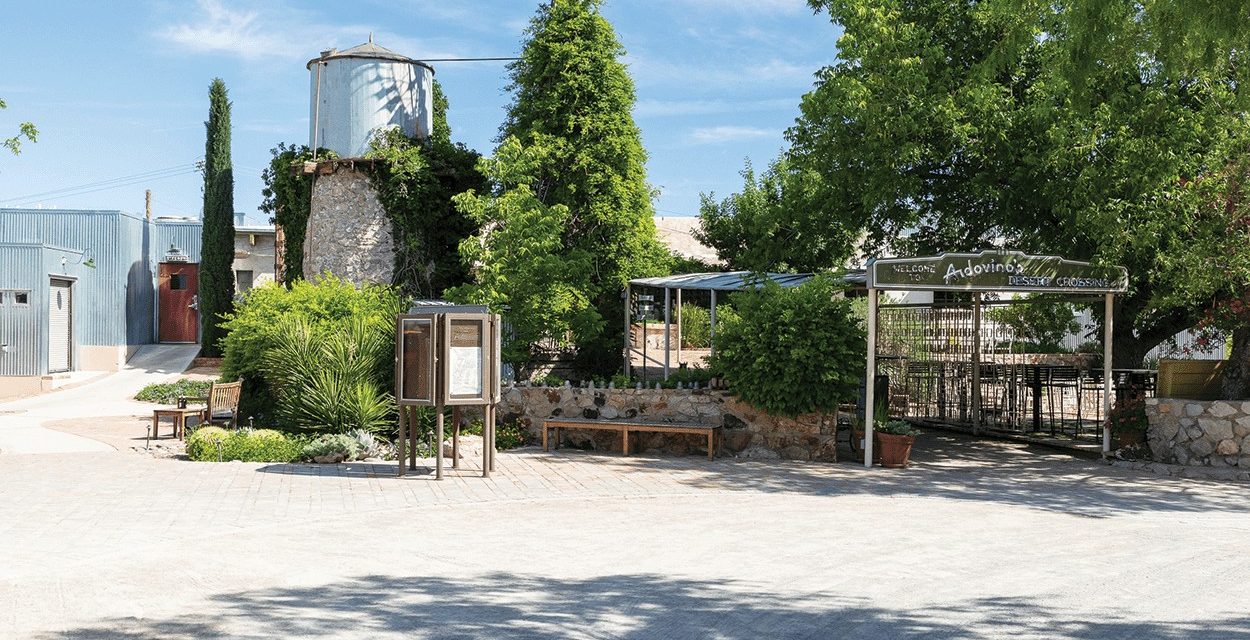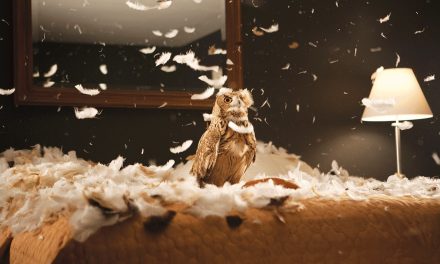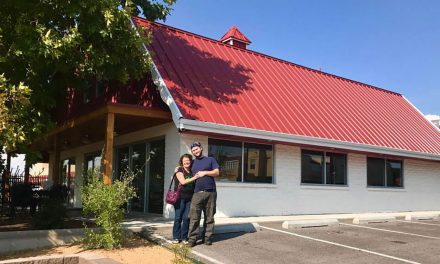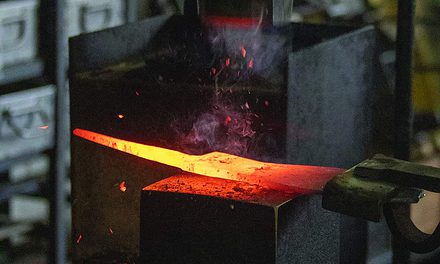An Extraordinarily Original Oasis
Story and Photos by Gabriella Marks


Left: Entrance to Ardovino’s restaurant. Right: Skydeck overlooking the Mexican border.
For many of us, a road trip is a relatively rare occasion. And depending on your penchant for planning, that may entail researching routes, browsing reviews, or previewing menus, all with the goal of maximizing every opportunity of the journey. As satisfying as it can be to parse all the data the internet provides to design the perfect getaway, I’ve found that the most delightful moments are invariably the ones I haven’t planned. When an outstanding place or a meal is unexpected, the thrill of discovery displaces the anticipation of planning, and I’m living in the moment, having an adventure.
With that in mind, I’m tempted to tell you only the barest details about Ardovino’s Desert Crossing—just enough to get you heading south, destination mapped, so you can encounter each enchanting moment as it unfolds. So maybe the best tack is to share some of the history behind this magnificent property, and let your curiosity compel you to visit.
It all began with Great Uncle Frank. Originally from Italy, he lived for a short time in New York before heading west, young man, with the US cavalry, landing in the frontier town of El Paso. He was something of a debonair hustler, a man given to “the finer things in life: gambling, drinking, good food,” according to his grandniece, Marina Ardovino.
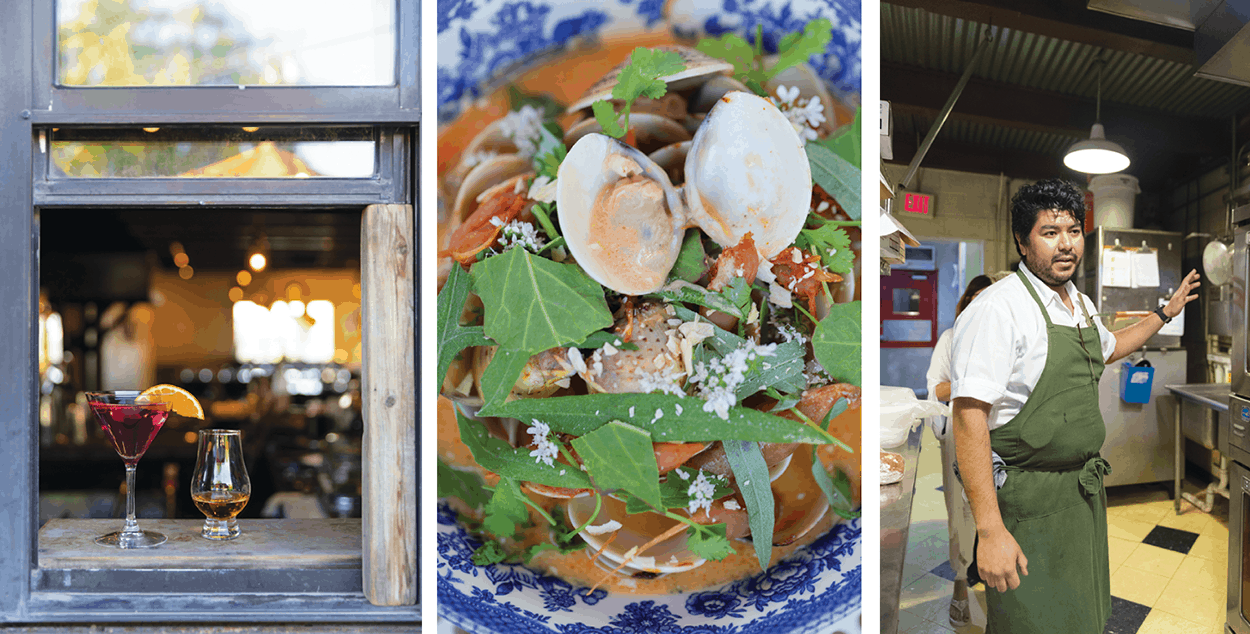
Left to right: Cocktails served through bar window to the patio, clams with kimchi and wild edibles, Executive Chef Danny Calleros.
After she and her brother and business partner, Robert Ardovino, discovered as much as they could about Frank—from family lore, hiring a historian, and even scouring the partially complete file the FBI had kept on him (the specific report documenting his associations with Bugsy Seigel is suspiciously missing)—there is still some dispute on the details. For example, it remains unclear whether Great Uncle Frank had moved west voluntarily or been chased from the East, and eventually even from the relatively lawless early township of El Paso, as a consequence of his aptitude for hatching illicit schemes, which ranged from illegal gambling to working as a taxi driver who enticed his fares with prohibited alcohol kept in the trunk. But no matter the exact reason or cause, Frank found that the wide open desert landscape of the Southwest suited him, and in 1949 he purchased ninety-seven acres and the country home of a Swedish cosmetologist in the little sliver of New Mexico that meets the southwest corner of Texas bordering Mexico.
At the time, the area known as Anapra (now called Sunland Park) was “a little town built by the Southern Pacific Railroad in the 1920s to house employees and their families, almost at the point where Doña Ana County meets the state of Texas at El Paso, and the state of Chihuahua at Juárez, Mexico,” according to Las Cruces author Paula Moore.
In those days, Texas was a dry state, so Frank was compelled to embark on his dream of opening an elegant Italian dining and gaming establishment for high rollers where he could pour spirits for his patrons. And although Frank lost or gambled away nearly two thirds of the land, he managed to hang on to thirty acres and the country home, which he transformed into what would become his family’s future destiny: Ardovino’s Roadside Inn.
In those days, Juárez was a bustling urban center, frequented by Americans looking for entertainment and cheap divorces. Decades later, before Juárez was struck with drug violence, Marina Ardovino would joke that El Paso, Sunland Park, and Juárez should form their own union, companionate in feeling relatively disowned from their own states. To this day, many native born New Mexicans have never heard of Sunland Park (as Anapra eventually became named).

Left to right: Chef Carlos Ortega showing off ferments, ocotillo flowers fermenting, grapefruit ferment.
Today, in the seventieth anniversary year of the establishment, sister and brother team Marina and Robert carry on and expand upon their great uncle Frank’s original vision. Having been raised in a restaurant family, in their parents’ pizzeria in El Paso, the Ardovinos have lived and breathed the restaurant world since early childhood, napping under tables, then helping with bussing and waiting as they grew up. After brief stints in other professions—Marina as an Italian studies major with aspirations of leading tours in Italy, and Robert as a photography graduate of the esteemed ArtCenter College of Design in Pasadena and a working Los Angeles photographer—their paths eventually converged back home, in 1994, at their birthplace of El Paso and their birthright of the then semi-abandoned Ardovino estate.
Following Frank’s passing in 1973, their father had held on to the property. There was sporadic use, but the place fell into disrepair. It took three years for Marina and Robert to bring it back to muster, with the help of family and friends. Once ready for visitors, they ramped up slowly, over five years’ time, from event venue to catering and finally to a destination fine-dining restaurant in the heart of the desert.
Originally home to a single restaurant, the property now includes a lounge, multiple dining rooms, a garden patio, and a separate banquet hall. They recently added an outdoor “skydeck” with three-hundred-sixty-degree views of Texas, New Mexico, and Mexico.
From points north in New Mexico, the route there takes you forty miles east of Las Cruces, through Texas, and then a mile or two after the off-ramp from I-10, back across the state line into New Mexico. It’s a dry, dusty road heading to the foot of Mount Cristo Rey, and the stately driveway leading into Ardovino’s Desert Crossing. You might emerge from your vehicle a little fatigued from the road, a little disoriented by the lush landscaping of trees and flowering bushes, the melodic bird song and buzzing of bees. You might still be expecting the standard fare of the region—likely chicken enchiladas with red or green, rice and beans, and a cold cerveza.
And you would be in for quite the surprise.
In its original heyday, Ardovino’s was one of the few elegant, fine-dining establishments in the area. In Marina and Robert’s hands, this concept has evolved into an innovative culinary experience. At its heart, this is still very much an Italian restaurant, serving up beautifully executed plates like Lamb Pappardelle, with Bakka Ranch braised lamb ragu, hazelnuts, pappardelle, house greens, and pecorino, and Corn Agnolotti, fermented corn and ricotta–filled pasta with whey cream, grilled local mushrooms, salsa macha, textures of heirloom corn, and wild edibles.

Left to right, clockwise: Marina and Robert Ardovino, “Sweet 57,” patio dining at Ardovino’s.
The dishes are as gorgeous as they are delicious, adorned with floral flourishes and edible aromatics grown on the grounds. And this is where the restaurant truly distinguishes itself. The current executive chef, Danny Calleros, began bussing tables there at seventeen.
Following a stage in South Carolina, he returned to share his passion for reinterpreting the classics with foraged and fermented ingredients. Together with young chef Carlos Ortega, a self-taught mastermind of fermentation, he is bringing back a nearly forgotten heritage of curing meats and fermenting vinegars, garums, vegetables, and even proteins, with an insatiable appetite for re-introducing traditional regional ingredients using techniques popularized in recent years by world class restaurants like Copenhagen’s renown Noma.
For Robert, Marina, and Ardovino’s chefs, there is art in bringing new tastes to a region not necessarily known for culinary experimentation. Their method is to take a well known and beloved standby, like barbacoa, and introduce European techniques and presentation. This results in brunch dishes like Barbacoa Benny, beef barbacoa, fried sope, fresh cilantro and onion, hollandaise, salsa macha, and poached eggs, served with breakfast potatoes, and Avocado Toast, local sourdough with charred avocado, smoked salmon, poached estate egg, pickled garlic, citrus green house salad, and cotija.
Part of the magic of Ardovino’s Desert Crossing is that this is still very much a family run business with the red velvet booths, gold chairs, and extravagantly fragrant jasmine. As Marina describes it, “We are a family business with the structure of a corporate business—the discipline is every bit as important, but what we add to it is the humanity.”
Over the years, that humanity has manifested as a kind of can-do, make-do approach to creating a sustainable oasis in the desert. When they found it challenging to source fresh produce locally, they went bold, starting not only their own agricultural program and hiring farmers, but establishing in 2001 what is now one of the oldest weekly farmers markets in the state.
And after Robert fell in love with the concept of vintage trailer court lodging at Bisbee, Arizona’s iconic The Shady Dell, he purchased his first vintage trailer on the drive back home. Thus began his pursuit of renovating vintage accommodations. Years of meticulous rebuilding and design resulted in the “Sweet 57,” their first lodging through Airbnb. As something of a nascent connoisseur of restored vintage trailers (like Hotel Luna Mystica of Taos and Marfa’s El Cosmico), I can attest to the exceptional attention to detail and finish that distinguishes the Sweet 57. And she is just the first. As the collection of vintage trailers around the property perimeter attests, Robert is working to revive eight additional trailers as part of a master plan that includes an amphitheater, boutique hotel, and RV park—all within sight of the US-Mexico border. In part, this is a story of perseverance, humanity, and even beauty in the face of that fraught boundary.
Perhaps what it most striking about Ardovino’s Desert Crossing is that the art of preserving a family tradition lies in culinary and environmental innovation—that the latter sustains the former in a process of ongoing reinvention.
The Ardovinos have an extraordinary vision. If what they have achieved to date is any indication, together with their community of architects, landscape designers, farmers, and chefs, realizing it seems entirely possible. The classic definition of an oasis is a place that provides “refuge, relief, or pleasant contrast,” “a fertile or green area in an arid region.” The Ardovino family has poured their collective hearts and souls into creating a place that, by all measures, is a little otherworldly and fantastical. And yet it exists. One can only imagine and look forward to what it will become.
1 Ardovino Drive, Sunland Park, 575-589-0653, ardovinos.com
Edible celebrates New Mexico's food culture, season by season. We believe that knowing where our food comes from is a powerful thing. With our high-quality, aesthetically pleasing and informative publication, we inspire readers to support and celebrate the growers, producers, chefs, beverage and food artisans, and other food professionals in our community.

